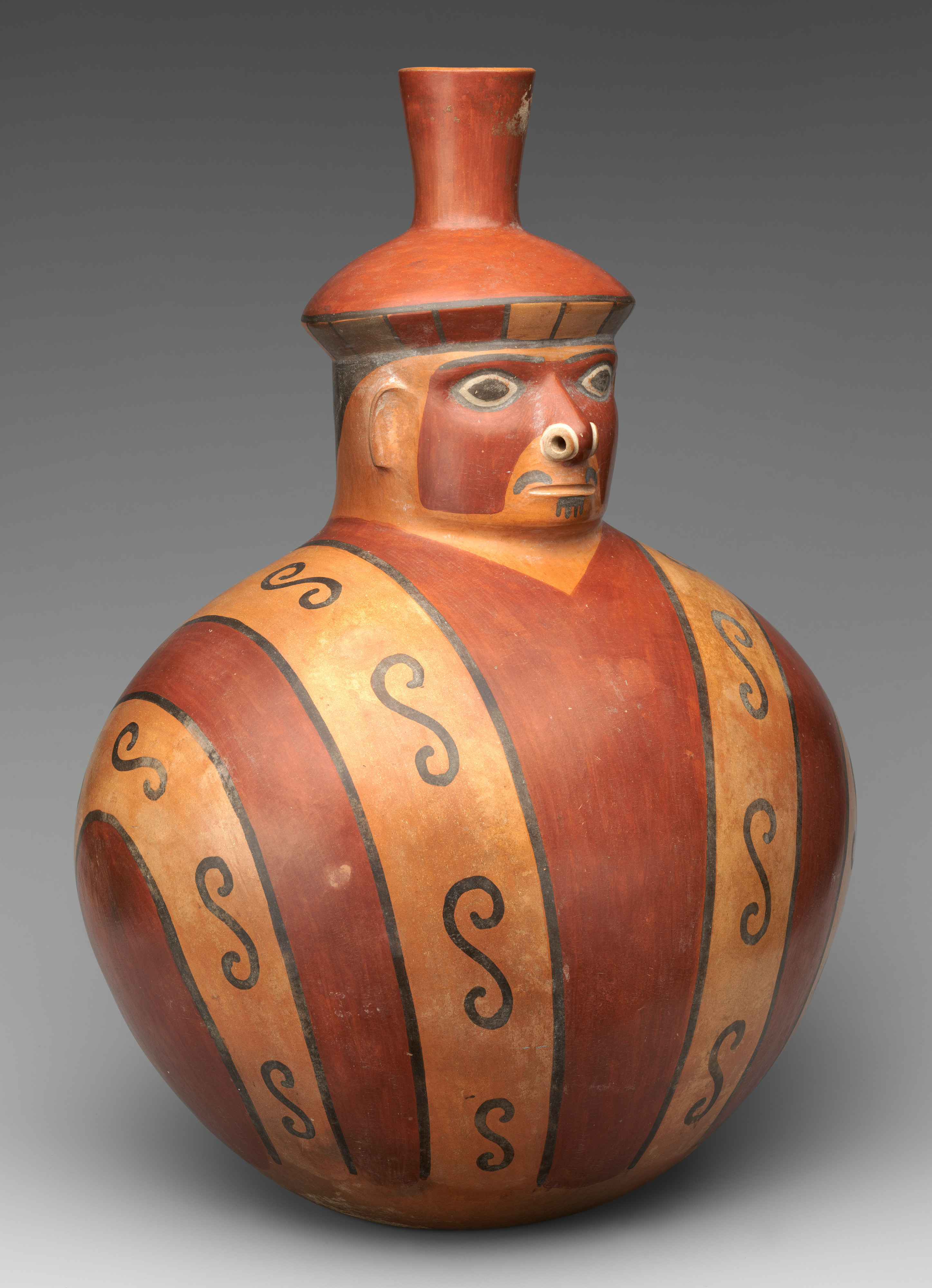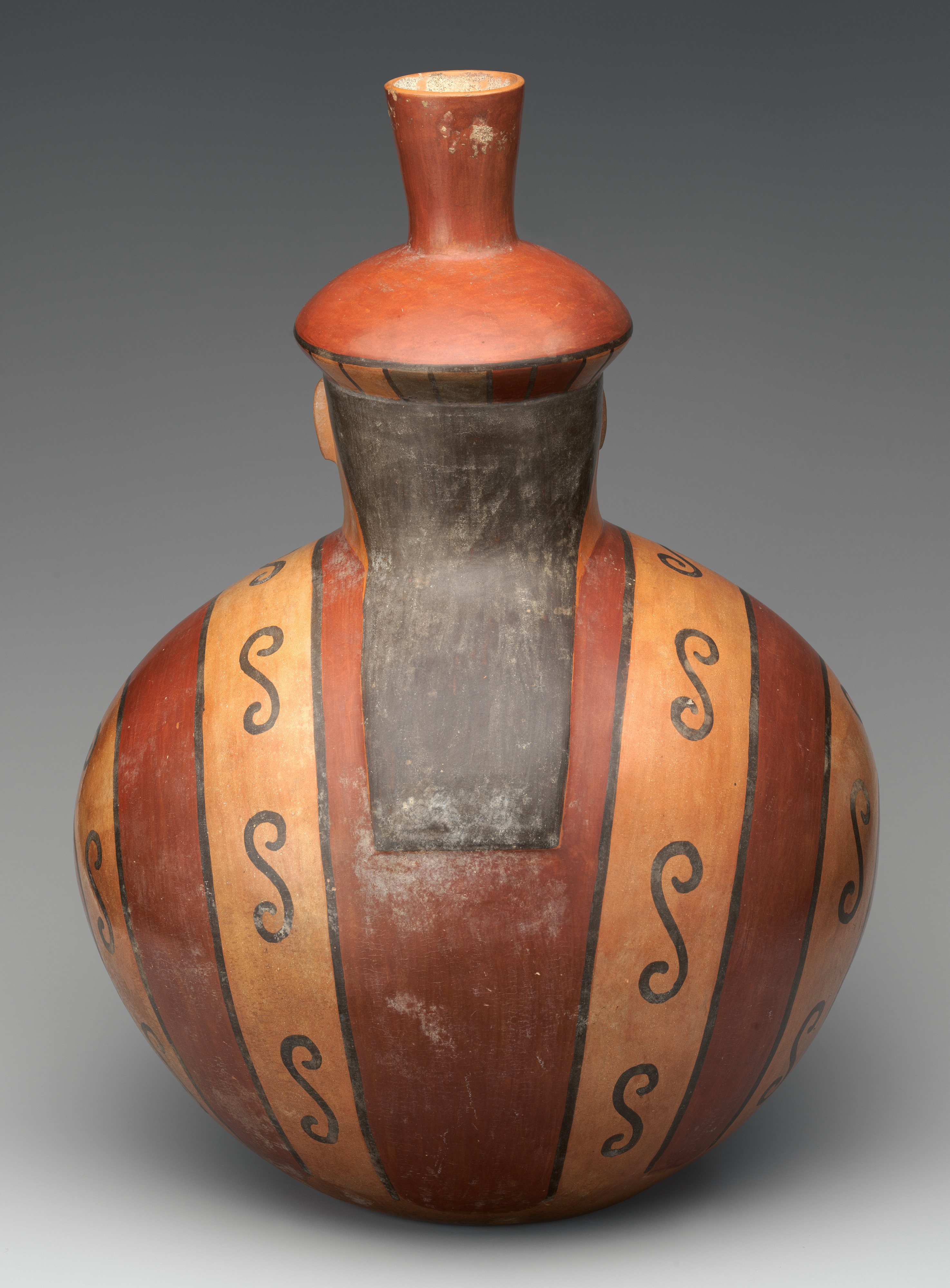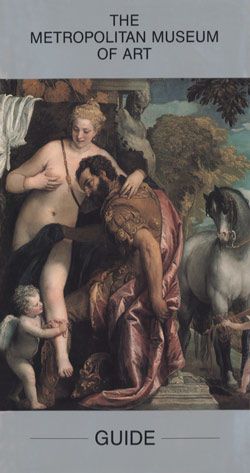Effigy bottle
Modeled in the shape of a man, the body of this vessel was painted with vertical stripes characteristic of finely woven, high-status tunics. A hat and red face paint embellish the man’s head, underscoring his lofty position. Effigy vessels are prominent yet enigmatic Andean art works, ripe with interpretative possibilities: by drinking its contents, does one consume the essence of the pictured individual?
The figure’s hat features a geometric design in red, yellow, and gray; the tunic has a V neck and four vertical yellow bands with S-shaped motifs that run from the front to back. He wears a white nose ornament and sports a thin moustache and small goatee.
Between 500 and 1000 CE, the Wari built a vast empire expanding from its homeland in Ayacucho in the highlands of central Peru. The state fostered the development of the visual arts, including textiles, ceramics, and stonework, often imposing standardization in the production of high-status garments and other items.
References and Further Reading
Bergh, Susan E. Wari: Lords of the Ancient Andes. New York: Thames & Hudson, 2013.
Isbell, William H., Mauricio I. Uribe, Anne Tiballi, and Edward P. Zegarra. Images in Action: The Southern Andean Iconographic Series. Los Angeles: The Cotsen Institute of Archaeology Press, 2018.
This image cannot be enlarged, viewed at full screen, or downloaded.
This artwork is meant to be viewed from right to left. Scroll left to view more.





